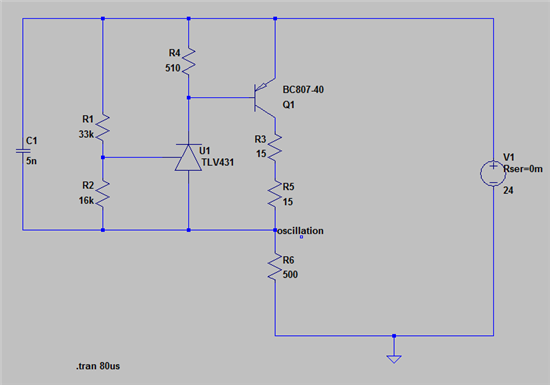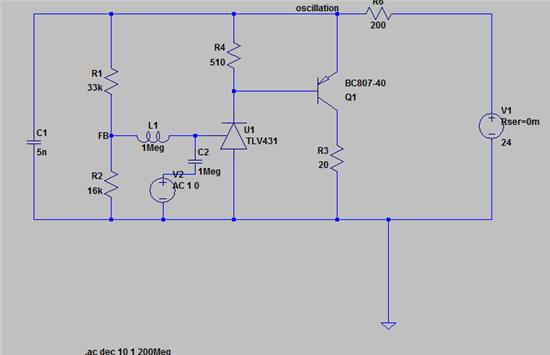Hello everyone,
I use the TLV431B in the following configuration:
Transistor Q1 is used to drive high currents up to 100mA (TLV431B can drive maximum 15mA).
But, at high load currents(small R6), there is a oscillation at the marked point in the picture (above R6)!
It looks like an stability problem. Can anyone explain this?
Is there a good spice-model of the B-Variant available?
Thanks for your help!!!




